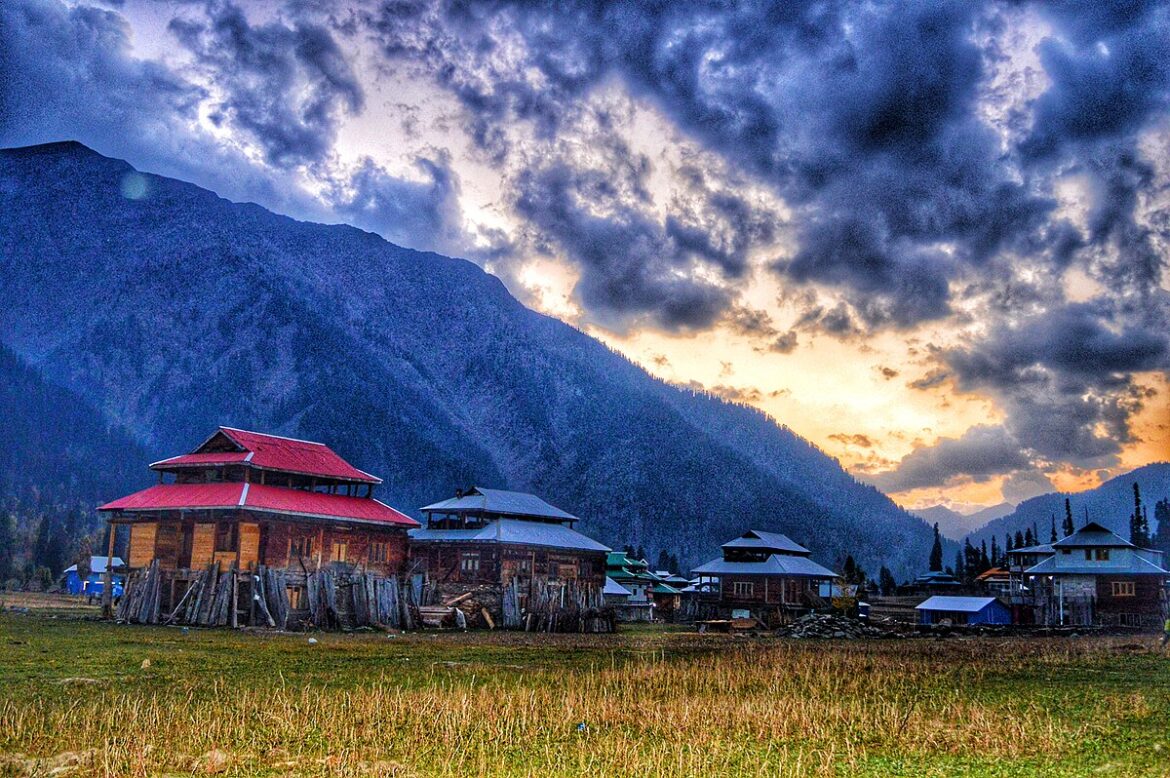Often described as “Paradise on Earth,” Kashmir is one of South Asia’s most visually striking and culturally rich destinations. Nestled in the western Himalayas, the region captivates travelers with snow-capped mountains, emerald valleys, tranquil lakes, and centuries-old traditions. Despite its complex political history, Kashmir continues to attract visitors drawn by its natural beauty, spiritual atmosphere, and unique blend of cultures.
A Landscape of Extraordinary Beauty
Kashmir’s greatest appeal lies in its dramatic and varied landscapes. The Kashmir Valley, surrounded by towering mountain ranges, is known for its lush meadows, crystal-clear rivers, and changing seasons that transform the region throughout the year. In spring and summer, the valley bursts into color with blooming tulips, almond blossoms, and green fields. Autumn brings golden chinar leaves, while winter blankets the region in snow, creating a serene, almost dreamlike environment.
At the heart of the valley lies Srinagar, the region’s main city and cultural center. The iconic Dal Lake, with its floating gardens and traditional houseboats, offers a peaceful escape from urban life. A shikara ride across the lake at sunrise or sunset provides one of the most memorable experiences in Kashmir, as reflections of mountains and mosques shimmer across the water.
Mountain Resorts and Adventure Tourism
Kashmir is also a major destination for mountain and adventure tourism. Gulmarg, one of Asia’s premier hill resorts, is famous for its wide alpine meadows and winter sports. During the colder months, Gulmarg becomes a hub for skiing and snowboarding, featuring one of the world’s highest cable cars, the Gulmarg Gondola. In summer, the same slopes attract hikers, golfers, and nature lovers.
Pahalgam, another popular resort town, serves as a gateway to scenic valleys and trekking routes. Situated along the Lidder River, it offers opportunities for trout fishing, river rafting, and peaceful nature walks. Nearby alpine pastures such as Betaab Valley and Aru Valley showcase Kashmir’s pastoral charm, with grazing horses, wooden cottages, and panoramic views.
Culture, Crafts, and Traditions
Kashmir’s cultural heritage reflects a unique fusion of Central Asian, Persian, and South Asian influences. Traditional architecture, wooden mosques, and Sufi shrines dot the landscape, emphasizing the region’s spiritual depth. The historic Jamia Masjid in Srinagar stands as a powerful symbol of Kashmiri craftsmanship and devotion.
Kashmir is internationally renowned for its handicrafts. Pashmina shawls, handwoven carpets, papier-mâché art, and walnut wood carvings are integral to the local economy and cultural identity. Visiting artisan workshops allows travelers to understand the patience and skill behind these timeless creations.
Culinary Experiences
Kashmiri cuisine is another highlight of tourism in the region. The traditional Wazwan, a multi-course feast prepared for special occasions, showcases rich flavors and intricate cooking techniques. Dishes such as Rogan Josh, Yakhni, and Dum Aloo reflect the region’s love for aromatic spices and slow-cooked meals. Warm cups of Kahwa, a spiced green tea with saffron and almonds, are an essential part of Kashmiri hospitality, especially during cold evenings.
Spiritual and Slow Tourism
Beyond sightseeing, Kashmir offers opportunities for spiritual reflection and slow travel. Ancient temples, mosques, and shrines coexist peacefully, reflecting a long history of religious diversity. Many travelers visit Kashmir to disconnect from fast-paced modern life and reconnect with nature, silence, and inner balance.
Practical Travel Considerations
Best time to visit: April to October for sightseeing; December to February for snow activities
Climate: Cool summers, cold winters with snowfall
Accommodation: Hotels, houseboats, and guesthouses
Transport: Road and air connections via Srinagar
A Destination of Contrast and Grace
Tourism in Kashmir is defined by contrast — between tranquility and drama, tradition and change, nature and humanity. It is a place where landscapes inspire awe and cultural encounters leave lasting impressions.
For travelers willing to explore with respect and openness, Kashmir offers more than scenic views. It provides a profound experience shaped by beauty, resilience, and timeless hospitality — a journey into one of the most evocative regions of the Himalayas.


